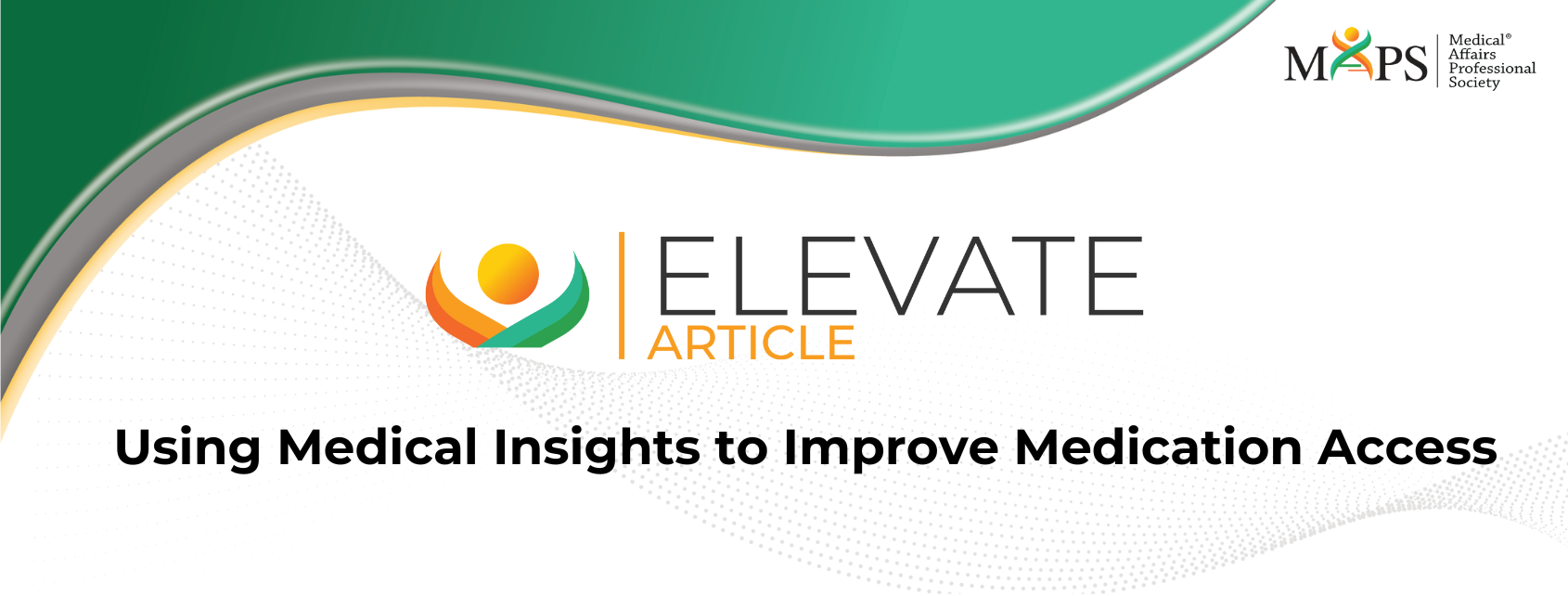Authors
This publication represents the consensus opinions of the authors and various members of MAPS but does not represent formal endorsement of the conclusions by their organizations
Canna Jagdish Ghia, MD, MHA – Therapy Lead, Pfizer Vaccines, Pfizer India
Frank Saracco, PharmD, MBA – Associate Director, Insights & Training, Medical Communications, Medical Affairs, Astellas Pharma
ABSTRACT:
Medical Affairs (MA) can help optimize access strategy across a portfolio of products through generation and analysis of crucial medical insights on therapeutic area dynamics, competitor data, and value proposition to payers. With intensified public pressure to reduce drug spending, the trend of using MA to communicate value-based messages related to medical insights generated from stakeholders will continue. This article is an opportunity to discuss how MA leaders are equipped with capabilities to improve medication access through medical insights utilization. Some examples of medical insights to improve medication access are: identifying areas to generate Real-World Evidence for differentiating clinical outcomes; adapting clinical-trial design for medication access-relevant endpoints; patient preferences and services that boost medication adherence and compliance; targeted therapeutics to reduce payer budget impact by identifying populations that receive the maximum benefit; and, value-based contracting to mitigate the clinical uncertainty of a high-cost treatment. These are just a few of the many opportunities that exist to utilize insights.
INTRODUCTION:
“Medical Affairs (MA) has the opportunity to leave behind its former status of principally being a support function to forge a new role as a primary strategic pillar of the organization alongside Research and Development, Commercial, and Market Access”. 1
MA, in its dual externally/internally facing role, may help optimize medication access strategy across a portfolio of products through generation and analysis of crucial Medical Insights on therapeutic area dynamics and value proposition to payers.
Therapeutic area dynamics can encompass a spectrum of externally focused activities from foundational disease state education to management goals, therapeutic choices, and outcomes. Medical Insights can help quantify and visualize progression through the health care professional’s (HCP’s) scientific journey, that maps to a patient’s/caregiver’s decision journey, from awareness to familiarity, consideration, and finally adoption (Figure 1). Thus, Medical Insights generated about therapeutic area dynamics can help improve medication access.



